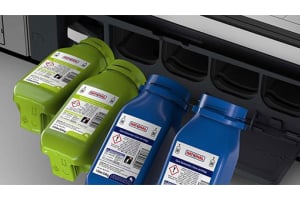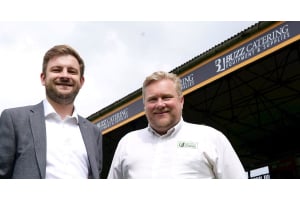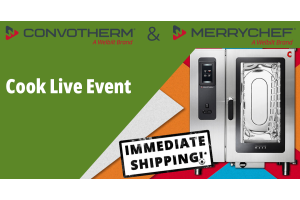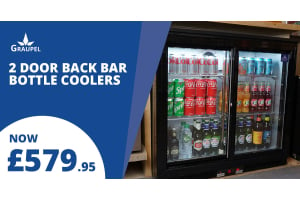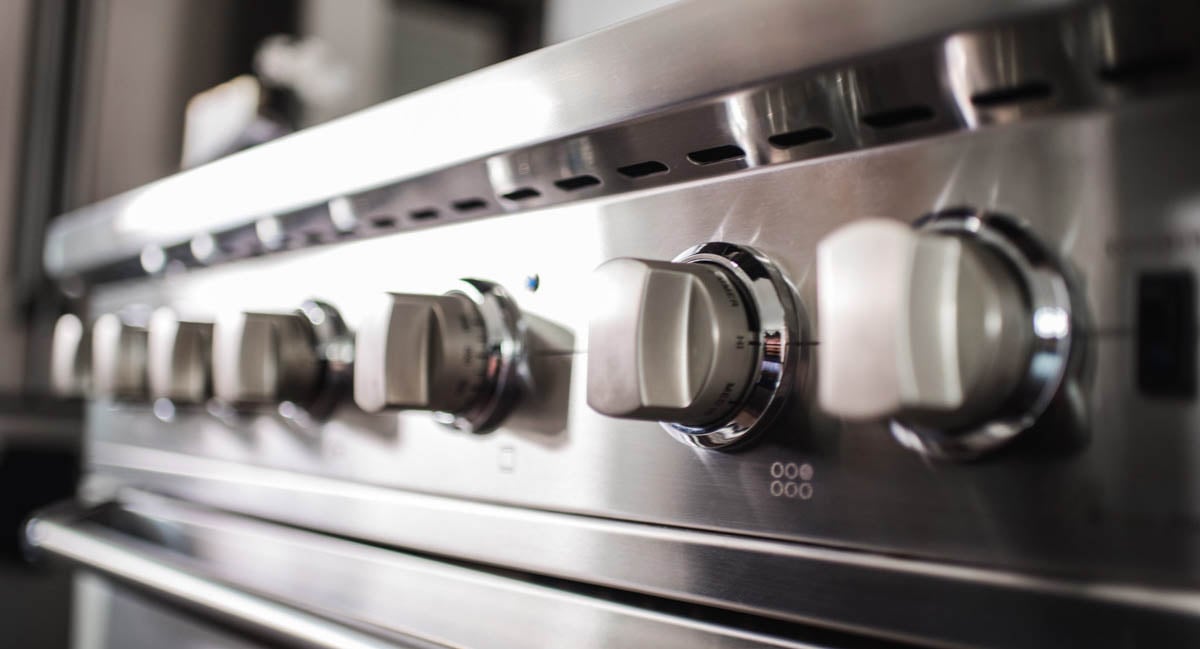
The commercial oven is one of if not the most important appliance in your commercial kitchen. However, deciding which oven is best for your kitchen can be tricky; our definitive guide to commercial ovens should help you in your buying process.
When considering which commercial oven to buy price is not always to determining factor, you should prioritise choosing the product which will meet your kitchen needs, not just save you money in the short term.
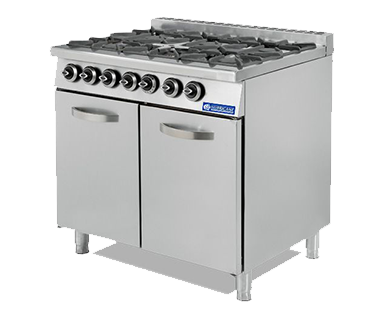
Commercial Cooker Ranges:
Typical cooker ranges feature open gas burners or electric hobs on the top surfaces as well as a large cooking cavity inside of the oven. Having dual integration allows you to cook multiple menu items at the same time saving you time on food delivery to your customers, and saves you the cost of having to buy two separate commercial appliances. This is also good for small commercial kitchens as it saves you floor space allowing for a better kitchen workflow. (See our kitchen design article for more.) Also, most cooker ranges are gastronorm pan compatible, meaning they can fit the standard sized gastronorm pans which are readily available and interchangeable.
Higher end ranges may include solid tops, induction hobs or built-in griddles for higher versatility making them an even greater all-around option. Solid top ovens allow for variable heat control across the hobs enabling you to have one pan simmering and another on a rolling boil. Induction cookers help save on running costs and function at lower working temperatures in commercial kitchens.
Cooker range also comes 4 burners and 6 burner types. 4 burner commercial cookers are great for smaller cafes and restaurants or other sites where space is at a premium. 6 burners are the catering industry standard commercial cookers as they provide both a good oven capacity and plenty of hob space.
Commercial cooker ranges come in a range of different power types.
Gas (natural and LPG) - instantaneous heat - no need to wait for the appliance to heat up. Easy temperature control.
Electric (1 or 3 phase) - more efficient power source, provides a more even temperature resulting in more consistent cooked food.
Dual functionality - offers the benefits of control a gas hob offers with the energy efficiency and even temperature control of an electric oven.
A commercial cooker is not always the right solution for your professional kitchen. You may require a more tailored piece of equipment to do a specific job or multiple jobs, or you don't have the kitchen space for a large commercial cooker. Luckily there are plenty of alternative appliances.
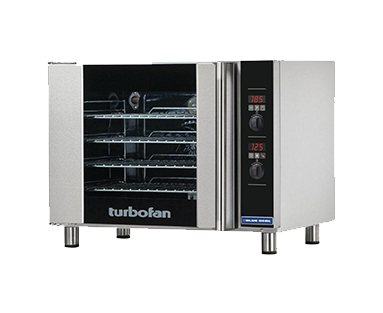
Convection Oven:
Compared to oven ranges, convection ovens are more compact and use an internal fan to spread heat through the cooking cabinet. This dramatically reduces cooking times and ensures a consistent temperature through the oven, meaning that the food cooks the same way even though the food, also if they are on different levels (shelves) in the oven.
Another advantage of the faster cooking time is that there are a higher cook yield, meat and other products that are prone to drying retain more of their weight meaning there is more product to sell and less waste.
Efficient convection oven models will run from a single 13 AMP plug; this makes these cookers perfect for event catering where power options may be limited. For more detail view our convection oven buyers guide
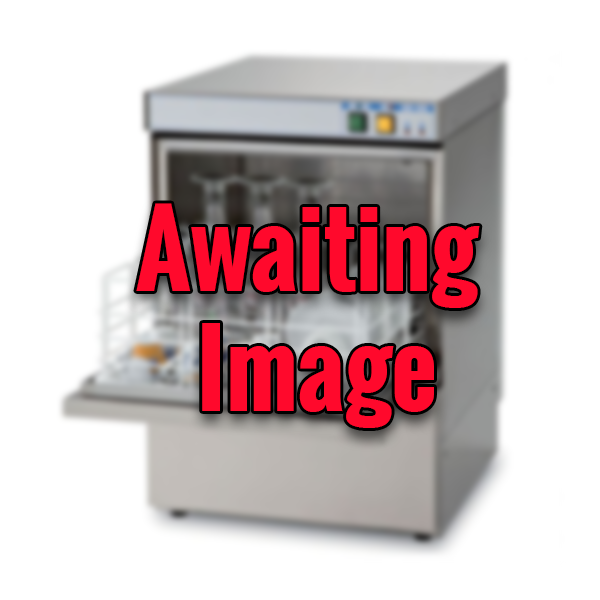
Combination Ovens:
Of all commercial ovens, combination ovens or combi ovens are the most advanced and powerful commercial cooking appliances in the professional kitchen. Combi ovens use convection, steam or a combination of both (hence the name). This makes combi ovens a true multi-functional appliance as they can steam, fry, roast, bake, stew and more. In some models, it is possible to cook multiple types of food at the same time, each different dish cooked at varying temperature levels to suit the food type. For example, Rational combi oven which can be used to cook multiple items on different shelves at different temperatures, all controlled with a built-in computer which adjusts time and temperature to suit. This is made possible through interactive touch screen interfaces allowing for custom programming which is found on most modern combi oven ranges. For more detail view our Combi Oven Buyers Guide
As combi ovens use and create steam, most models will need a mains water supply connected to them as well as overhead extraction if ventilation is an issue in your kitchen. Ensure a site survey is carried out before installation.
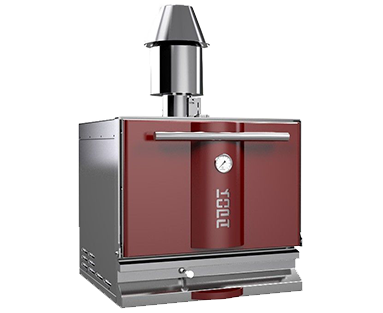
Charcoal Ovens:
Without reliance on gas and electricity, charcoal ovens are used to produce the authentic BBQ smell and flavour from the accessibility and versatility on an indoor oven. Cooking at much higher temperatures typically offers much faster cooking times, charcoal ovens are ideal for producing perfect steak, burgers, fish and vegetables in front of house environment, as it also adds theatre to the cooking process as customers can see the flames of the charcoal burning. A great example of a commercial charcoal oven is a Kopa charcoal oven, which is specially designed for kitchens with limited space and it also consumes 45% less charcoal than other charcoal ovens, meaning that it is much cheaper to operate.
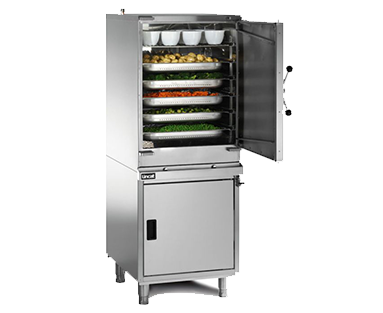
Steam Ovens:
Steam ovens are commonly referred to as Atmospheric Steamers and are ideal for cooking fish, vegetables and rice. Although they cannot braise or brown food, they are great for cooking on a large scale while maintaining nutrients in food. Steam ovens usually are gastronorm compatible allowing for easy transfer of pans between appliances.
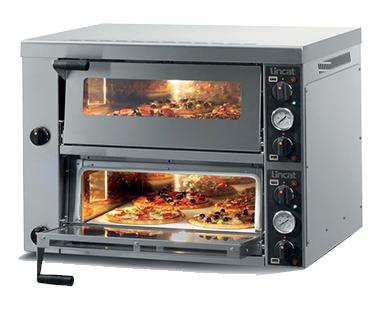
Pizza Ovens:
As the name suggests pizza ovens are generally used to cook various types of pizza, pizza ovens come in a variety of power types which can affect the flavour and texture of the pizza. Gas pizza ovens produce excellent taste especially when cooking with meats; these ovens allow you to control the temperature and heat of the cooking unit. Electric pizza ovens are usually slightly more expensive but require less attention than gas ovens, as you don't need to worry about gas leaks or to light a pilot light.
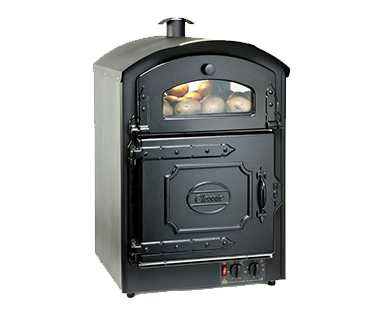
Potato Ovens:
Designed with front of house use in mind, a commercial potato oven can cook large batches of potatoes, due to their relatively small size, these unique merchandising solutions reach high temperatures quickly and retain heat meaning quicker cooking times and lower running costs. As jacket potatoes can take a more extended period to bake having a separate potato oven will free up your main appliances allowing for other items to be cooked in your main cooker. A lot of potato ovens offer a space to keep the jacket potatoes warm when they have been cooked, providing an appealing visual aspect for your customers, and quick service as the food is already prepared to be served.
Most potato ovens plug in meaning they are portable, this makes potato ovens great for event catering or mobile catering.
Power Types:
Commercial ovens can use a range of fuel types ranging from gas and electricity to charcoal and wood. As they can use a large amount of power, it's highly critical to check that there is more than adequate power capacity to keep your oven running effectively. Alternatively, gas options include natural gas or “mains” and LPG "liquid petroleum gas” whereas electric options include 13 amp plug or single or 3 phase connections.
Canopy Extraction
Upon surveying your site, it may become apparent that air extraction will be required when your commercial oven is installed. A commercial kitchen canopy filters smoke, grease and heat out of the air, this makes the environment much more comfortable to work in and will remove any heat and fumes produced by your commercial ovens (See our page on kitchen canopies)
Plumbing
Combination ovens, Atmospheric Steamers and some convection ovens will require a water mains connection to operate. This will assist in the production of steam for the cooking process as well as cleaning the oven at the end of service. Consider the positioning of the oven in your kitchen as it must be located close to a water source; this may result in you having to rearrange some of your existing kitchen appliances. Also, you need to consider the possibility of limescale which can cause damage to ovens if buildup occurs. If you live an area of hard water considering installing a water softener/filter, in some cases this may need to be fitted to validate the warranty.



